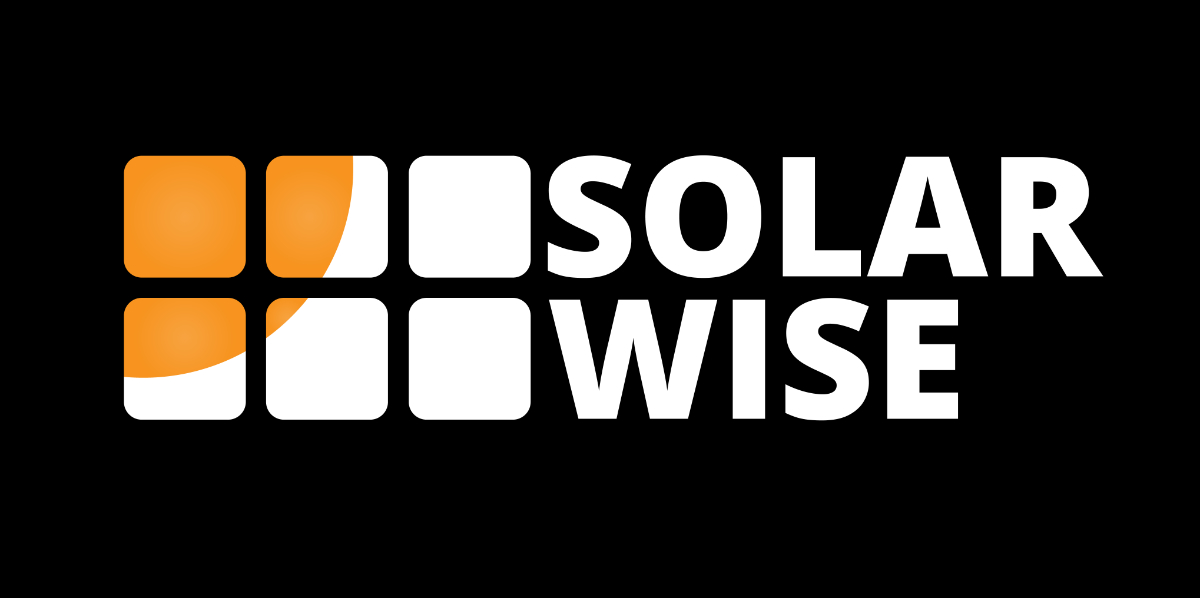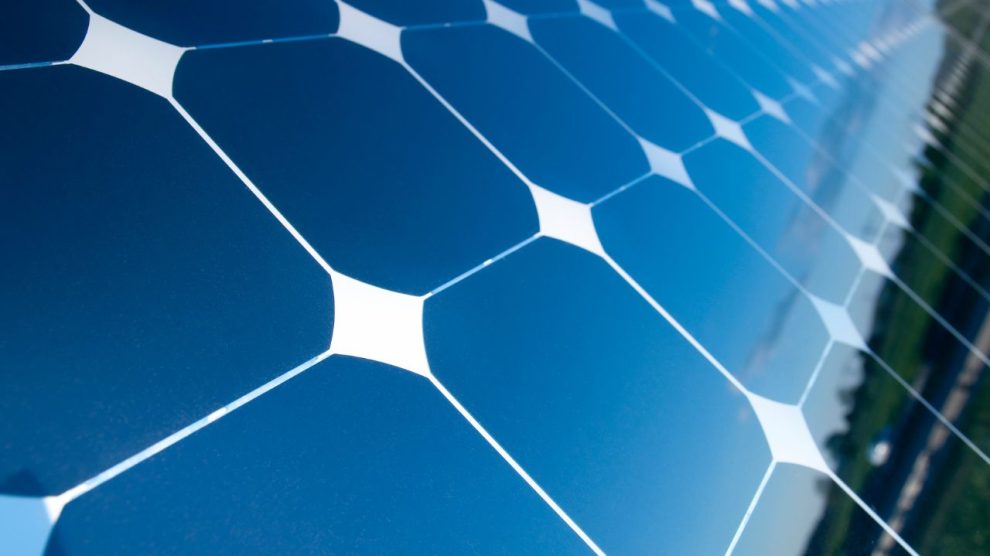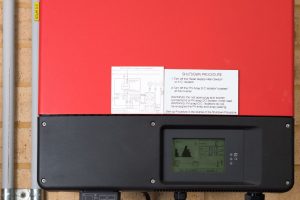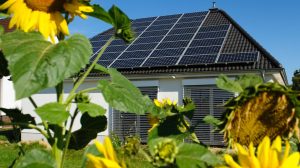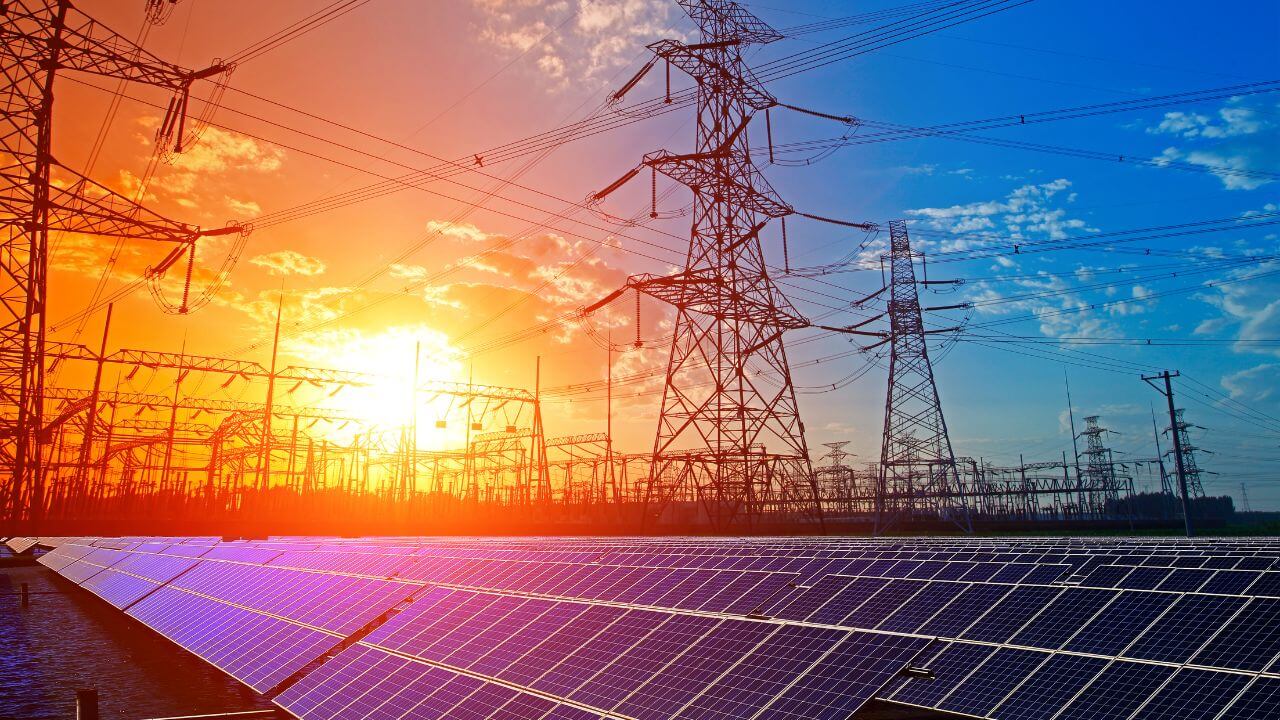Feeling daunted by the vast array of solar panel choices available? This article will guide you through the diverse universe of solar panel technologies. From the efficiency and cost aspects of monocrystalline and polycrystalline panels to the attributes of thin-film variants, we’ve got it all laid out for you. We will delve into the distinctive characteristics of each type of panel to aid you in selecting the one that aligns perfectly with your necessities. Come along as we demystify the various categories of solar panels and equip you to make a well-informed choice. Let the exploration begin!
Quick Insights
The solar panel market primarily showcases monocrystalline, polycrystalline, and thin-film varieties.
- Among these, monocrystalline panels boast the highest efficiency, whereas polycrystalline versions are more affordable, and thin-film options adapt well to unconventional roof designs.
- Regarding cost, monocrystalline panels are pricier; polycrystalline panels offer a more budget-friendly option, while the pricing of thin-film panels fluctuates based on their specific kinds.
- Constructed from semiconductor materials, frequently silicon, solar panels vary in composition: monocrystalline panels are derived from a singular silicon crystal, polycrystalline panels consist of silicon crystal fragments, and thin-film panels incorporate different materials, including cadmium telluride, amorphous silicon, or copper indium gallium selenide.
Monocrystalline Solar Panels
How they work
High-performance monocrystalline solar panels, or mono-SI panels, are crafted entirely from silicon. In contrast to other kinds, these modules generate more electricity, occupy less area, and have an extended lifespan. Opting for monocrystalline panels is wise if you seek a solar panel solution that promises effectiveness, longevity, and superior functionality.
The uniformity of the crystal structure in monocrystalline panels reduces electron resistance, maximizing energy conversion. Consequently, these panels offer superior performance, making them ideal for harnessing solar power effectively and sustainably.
Benefits
Monocrystalline solar panels boast the highest efficiency rates (15-20%) among solar panel types, making them ideal for maximizing energy production. Their sleek, uniform black appearance adds aesthetic appeal, while their superior efficiency requires less surface area for installation. This space-saving advantage is particularly beneficial for those with limited roof space or looking to optimize their renewable energy investment without sacrificing aesthetics.
Drawbacks
Despite their high efficiency, monocrystalline solar panels have some drawbacks. Their production process requires more refined silicon, making them costlier than other types. Additionally, these panels are sensitive to high temperatures, leading to reduced output under extreme heat. Partial shading can also adversely affect their performance, as even small shadows can disrupt the electron flow, decreasing overall power generation. Careful consideration of these factors is crucial when choosing the right solar panel for your needs.
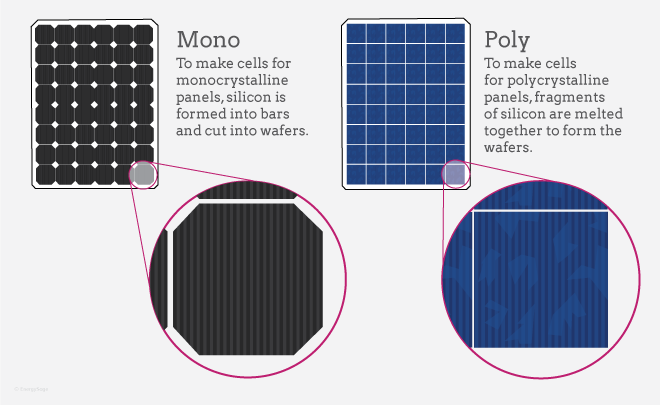
Credit: ases.org
Polycrystalline Solar Panels
Polycrystalline solar panels emerge as a prudent selection if you are seeking a budget-friendly solution, even though they are slightly less efficient compared to other types. While not matching up to the efficiency level of monocrystalline panels, they hold their ground regarding durability and trustworthiness.
Created by melting raw silicon, these panels are more economical than the monocrystalline versions. Though they may compromise a bit on space efficiency and have a somewhat reduced lifespan, their accessibility in the market renders them a favored option amongst a substantial section of homeowners.
Concerning installation prerequisites, these panels do not demand complicated setups and can be affixed on various surfaces. When pitted against monocrystalline panels regarding efficiency, they might exhibit a lower rating, yet they continue to supply considerable energy.
An additional advantage is their lesser adverse influence on the environment, owing to a manufacturing procedure that yields minimal waste.
In summary, polycrystalline solar panels present an economical alternative that does not compromise on consistent performance and enjoys a broad market presence.
How they work
A polycrystalline solar panel is made from multiple silicon crystals fused together, creating a blue-marbled effect. The multiple crystal structures in polycrystalline panels cause some electron scattering, resulting in a slightly lower efficiency compared to monocrystalline panels. Due to their affordability and reasonable efficiency, they remain a popular choice for many solar energy applications.
Benefits
Polycrystalline solar panels offer a budget-friendly alternative to monocrystalline panels, with efficiency rates ranging from 13-17%. Although their efficiency is slightly lower, their affordability offers homeowners a good compromise between cost and performance. Overall, polycrystalline panels provide a practical, eco-friendly solution for those looking to harness solar energy without breaking the bank.
Drawbacks
Polycrystalline solar panels, made from multiple silicon crystals, exhibit lower efficiency than their monocrystalline counterparts. This reduced efficiency necessitates a larger installation area to achieve equivalent power output. Moreover, their lifespan may be slightly shorter due to the less uniform crystal structure. Despite these drawbacks, polycrystalline panels remain popular, particularly for those seeking a cheaper option without sacrificing performance.
Thin-Film Solar Panels
How they work
Thin-film solar panels use a narrow coating of materials capable of generating power, such as amorphous silicon or other semiconductors, affixed to a base, which can be either glass or plastic. These coatings absorb the sun’s rays, transforming them into electrical energy through photovoltaic conversion. Given their lightweight and adaptable characteristics, slim-layer panels can be fitted onto various surfaces, thereby becoming a preferred option for projects where adaptability and visual appeal are significant, even though they might not be as efficient as some other varieties of solar panels.
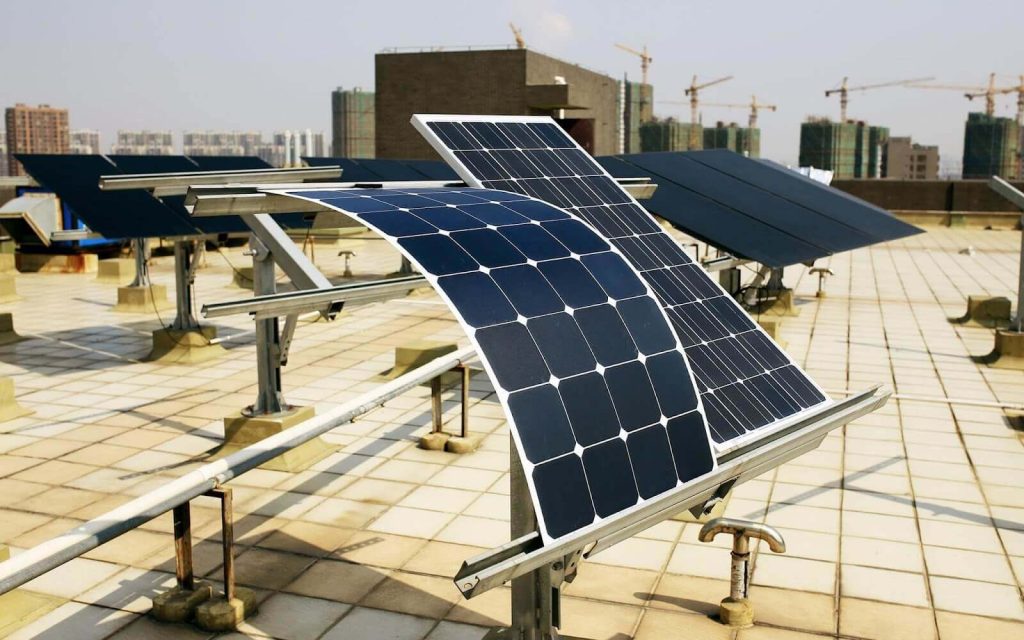
Credit: goexplorer.org
Benefits
Thin-film solar panels bring distinctive benefits, including their light and bendable structure, which qualifies them for various uses, notably in building-integrated photovoltaics (BIPV). Their capacity to merge seamlessly with different surfaces, such as windows and outer walls, boosts their visual allure. Moreover, these panels demonstrate superior performance in low-light and high temperatures, offering a dependable power supply even in adverse situations. This amalgamation of characteristics renders them a favorable choice for pioneering solar energy initiatives.
Drawbacks
Thin-film solar panels face several drawbacks, including their 10-12% low-efficiency rate, which demands a more extensive installation area to produce equivalent power output compared to other panel types. Further, their construction is less durable, often resulting in a shorter lifespan. These disadvantages must be considered when evaluating thin-film panels as a renewable energy solution, especially when balancing space constraints, longevity, and power generation capacity.
Bifacial Solar Panels: The Next Frontier in Renewable Energy
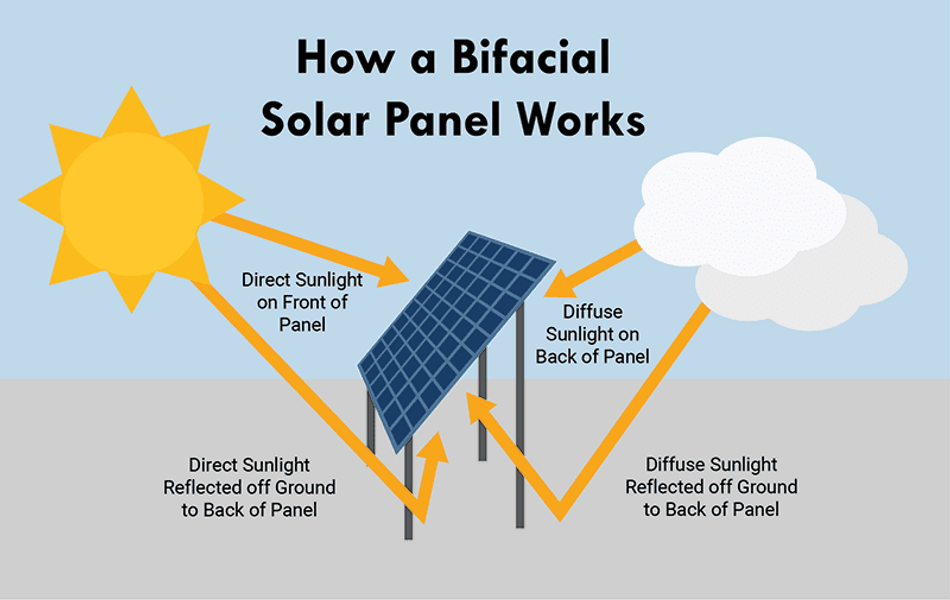
Credit: wevolver.com
Bifacial solar panels are a groundbreaking innovation in the solar energy industry, designed to absorb sunlight from both sides, thus exponentially maximizing energy production. Unlike traditional monofacial panels, which have a layer of backing material, bifacial solar panels are framed with a transparent back sheet or glass-on-glass, allowing them to capture sunlight from the front and reflect sunlight from the rear side. This dual-capturing mechanism enhances the panels’ ability to generate more electricity, harnessing the solar potential to its fullest.
Integrating bifacial technology within solar installations has opened new horizons for solar project developers and enthusiasts aiming for higher energy yields and efficiency.
Pros of Bifacial Solar Panels
- Increased Energy Yield: Bifacial panels generate 5-20% more energy than traditional panels, depending on the albedo (reflectivity) of the ground surface.
- Durability: Built with double glass or a transparent backsheet, these panels offer higher resistance to harsh environmental conditions, promising a longer lifespan.
- Optimized for Varying Terrains: These panels can be installed in many environments, including lands with high-ground reflectivity, which can significantly enhance energy output.
- Potential Financial Savings: Though the initial investment might be higher, the increased energy yield leads to a faster return on investment (ROI), potentially offering considerable financial savings in the long run.
Cons of Bifacial Solar Panels
- Higher Initial Costs: The innovative technology and materials used in bifacial panels make them more expensive initially compared to traditional panels.
- Complex Installation: Installing bifacial panels requires expertise to ensure optimal ground clearance and angle to maximize energy yield, potentially complicating the installation process.
- Dependent on Surrounding Conditions: The performance of these panels heavily depends on the ground’s reflectivity and other surrounding conditions, making them slightly less predictable in energy generation.
For Whom is it Good For?
Bifacial solar panels are particularly beneficial for large-scale solar projects, like solar farms or commercial installations, aiming to maximize energy yield within a limited area. Furthermore, individuals living in high-ground albedo areas, such as sandy or snowy regions, would find these panels highly efficient. It’s an excellent choice for solar enthusiasts seeking innovative, sustainable, and high-yielding solar solutions to meet their energy needs.
In conclusion, bifacial solar panels stand as a testimony to the ever-evolving solar energy sector, promising higher energy yields and optimized utilization of solar potential. Whether you’re a solar project developer or a renewable energy enthusiast aiming to transform how we harness solar energy, bifacial solar panels pave the way to a brighter, more sustainable future.
FAQ
Which type of solar panel is best?
The “best” solar panel depends on individual needs, budget, and installation constraints. Monocrystalline panels offer the highest efficiency but at a higher cost. Polycrystalline panels are a more affordable option with moderate efficiency, while thin-film panels are lightweight and flexible but less efficient. Evaluate your specific requirements and priorities to determine the most suitable solar panel type for your situation.
What type of solar panel is most reliable?
Regarding solar panels, monocrystalline ones stand out for their dependability based on their long lifespan, high efficiency, and unique single-crystal silicon structure. The uniformity of their crystal structure enables the efficient flow of electrons, leading to optimal energy conversion and solidifying their status as a reliable option for solar energy use.
Which solar panel is cheaper?
Polycrystalline solar panels are generally more affordable than monocrystalline panels due to their lower manufacturing expenses. They are made by melting multiple silicon crystals, resulting in lower efficiency. This cost-effectiveness makes polycrystalline panels popular for budget-conscious homeowners pursuing renewable energy solutions.
